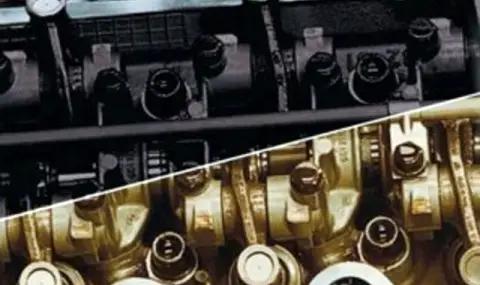One of the most controversial topics is whether to flush the engine when changing the oil. Let's try to deal with this problem in this article. Many believe that there is no need for the wash in question, even more so if it is a matter of normal operation of the car.
At first glance, using a car in the city seems quite normal and harmless to the engine and engine oil. Trips to work, the children's school or the store are a routine procedure for many, and according to them, the operation of the engine in such conditions is not stressful.
However, the facts are different. Frequent short trips lead to the accumulation of oil deposits, sludge and soot in the engine, because the engine oil does not have time to reach optimal operating temperatures. Let's find out how these deposits are formed and how to remove them easily and quickly.
Heat and oxygen contribute to the oxidation of the oil, leading to the formation of acids and insoluble components. This often causes tarry or varnish-like deposits to appear. Sulfur oxides formed during the combustion of sulfur-containing fuel are released through the exhaust system. But a small part of sulfur oxides, as well as nitrogen compounds, get into the crankcase and contaminate the engine oil.
When the piston rings stop working properly, this causes so-called "dirty burning", which leads to an increase in deposits. The worse the oil seals hold the oil, the more it burns in the combustion chamber and the more deposits form on the rings.
In such cases, a thorough engine cleaning is highly recommended and can reduce oil consumption and prevent costly repairs. Modern motor oils have balanced additive packages with reduced ash and low alkalinity. This makes them efficient, but also sensitive to pollution, which is inevitable due to fuel quality, driving style, oil quality and engine characteristics.
When changing the oil, the dirt particles that the oil keeps in suspension are poured out of the crankcase, preventing them from settling on engine surfaces. However, the number of dispersing additives is limited and they simply cannot hold all the dirt in a suspended state. That is why deposits and soot inevitably form in the engine, which remain in place and are not washed away with the used oil.
Under such circumstances, experts have long understood that only changing the oil is not enough - additional flushing of the engine with special means is necessary. How and with what to flush the engine?
Cheap oils are popular means of flushing the oil system. But this is not just not the best option, but rather even the worst. Because when draining wash oil, some of it remains in the system, and this oil does not at all meet the requirements of the car manufacturer for your engine. This oil does not contain the necessary additives and its effectiveness is questionable.
To solve this problem, there are special additives that are added to the old oil before it is changed. Let's try to understand the principle of their work. During 10 minutes of idling the engine, immediately before draining the old oil, these preparations dissolve sediments and deposits, which are then removed together with the used oil. That is, in essence, the flushing additive temporarily improves the cleaning properties of your old oil and, thanks to a fresh batch of dispersants, allows you to remove all impurities from the oil system along with the old oil.
Then the engine, freed from deposits and impurities and filled with fresh oil, can develop its full power. It is also important that the additive is such that it is completely neutral to the usual elastomeric materials. That is, not to harm the oil seals.
